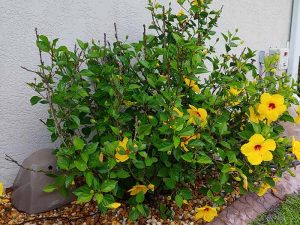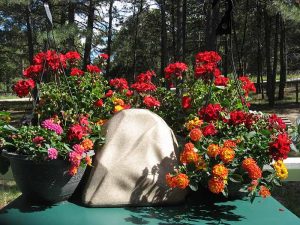Community Gardening Tips and Tricks

Community gardening is very popular with most urban residents. It provides city residents with an opportunity to connect with nature and socialize while growing vegetables and other crops for use at home.
However, some members underestimate the effort required to keep the garden functioning leading to abandonment and poor yields. This post shares community gardening tips and tricks for establishing a successful community garden.
Check out these blue links as you read thru this article for more information on Community Gardening.
Management structure
Even though most garden communities run informally, it is important for members to establish a management structure at the earliest opportunity. A structured system enables you to plan ahead and confront challenges before they lead to conflict and dysfunction.
Members should elect leaders based on commitment, expertise, and leadership skills. The leaders should be accountable and promote trust among members. They should set ground rules on issues such as membership, funding, and responsibilities. Managers should hold regular meetings and update members on new decisions and developments. They should also mediate and settle differences before they grow into conflicts.
These topics are some of the lesser thought about community gardening tips and tricks.
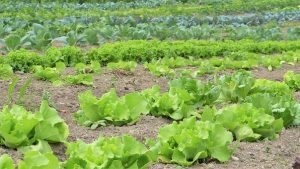 Funding
Funding
Funding is important because community gardening requires resources such as land, farm inputs, irrigation equipment, technical support, and manual labor.
The management needs to mobilize funds to cover all these costs and prevent project delays.
Some of the methods of mobilizing funds include membership fees, sponsorship, and fundraising drives.
Membership fees may involve charging members a fixed amount for joining the group. Members may also contribute to the acquisition of land, equipment, and farm inputs. It is up to the management to determine the criteria for sharing the costs.
Sponsorship involves getting an individual or organization to take responsibility for some of the costs of running the community garden. Sponsors will ease the financial burden on members by donating land or water source, making financial contributions, and providing farm inputs. Common sponsors include churches, private organizations, and municipalities.
Share responsibilities
It is important that you share responsibilities fairly among community members. One way of doing this is by creating a work schedule. This is a plan that distributes activities to members so that tasks, such as fencing and partitioning plots are completed on time. You should also install a waterproof notice board that informs members about major gardening events.
Most gardening communities partition the garden into several plots and allocate them to individuals according to need. The managers should mark each plot and indicate the name of the person responsible for maintaining it. If some tasks such as weeding become too tedious, you can mobilize volunteers to help so that weeds do not destroy your crops.
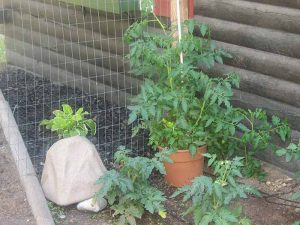 Water source
Water source
When selecting a site, ensure that there is a reliable water source. It should supply sufficient water for irrigating the garden during the driest months. Most community gardens source water from streams, boreholes, or municipal supply.
Whether water supply is metered or natural, you can reduce consumption by installing a drip irrigation kit or a Hanging Basket watering system.
Drip systems save water by delivering it directly to the plant’s roots instead of spraying all over the garden. They reduce the cost of water if you are using a metered system. They also reduce the cost of weeding because most of the weeds won’t access the irrigation water.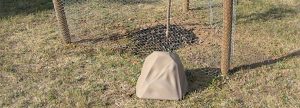
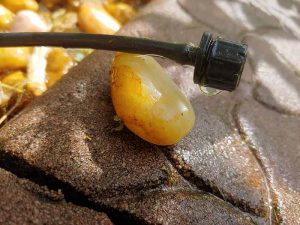
Ideas for planting
After sorting out the lease, water supply, partitioning the land and sharing responsibilities, you can proceed to work on your plot. If you are trying gardening for the first time, start with hardy, low-maintenance crops.
Herbs like sage and parsley and vegetables such as mustard and kale take root fast and survive even if you skip a few watering sessions. They also withstand invasive weeds much better than high-maintenance crops like strawberries.
After getting some farming experience, you can introduce tubers such as beets because they are easy to manage and do well without fertilizers. You can also spare some space for cabbages and plant them every two weeks so that they mature at different times. Other crops that you can try include eggplants, leeks, and garlic because they are not prone to pest attacks.
Companion planting
Companion plants increase the produce you harvest from a small space. Most companion crops work by fixing nitrogen in the soil, fighting pests, or acting as support for others.
Inter cropping also attracts pollinators, such as bees and butterflies due to the different plants in the garden. Some of the most popular companion crops include:
Tomatoes and herbs: herbs such as basil, asparagus, and marigold enhance the health and yields of tomatoes by repelling pests. They are very effective at fighting nematodes, mites, and garden flies.
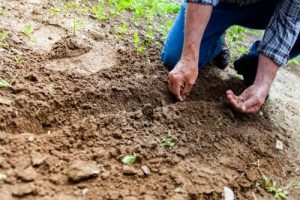 Pepper and basil: inter cropping basil with pepper repels flies, aphids, and mites that suck nutrients from the basil plants.
Pepper and basil: inter cropping basil with pepper repels flies, aphids, and mites that suck nutrients from the basil plants.
Corn and beans: beans are a great companion for corn because corn will grow straight up while beans are creepers. The beans use the corn stem as support while fixing nitrogen that the corn utilizes to grow.
Other crops that you can integrate with beans include rosemary and broccoli because they repel pests and improve the yield.
Carrots and onions: plant carrots next to onions because they repel aphids and carrot flies. Other crops that benefit from intercropping with onions include cabbages, beetroots, and lettuce.
Lettuce and herbs: plant herbs such as chives, mint, and garlic next to lettuces to fight off slugs and aphids that attack them. The herbs also enhance the flavor of lettuce.
Radishes and carrots or cucumbers: radishes enhance the yield of cucumbers by repelling beetles. They also improve the production of carrots by loosening the soil. This is because when you harvest them, the carrots will be at the thickening stage where they need loose soil.
Fertilizing
If you can get organic manure, it is the best form of fertilizer to use in the garden because it improves the soil and retains moisture. You can inquire about its availability from experienced gardeners and local agronomists. However, if it is not available, only use inorganic fertilizers on plants that need them most, such as green vegetables.

Mulching
Mulching helps reduce water loss due to evaporation. You can lower your water usage by placing a 2-inch thick layer of vegetative material on your plot. Cut or slash straw from abandoned plots and unused parts of the garden. Let them to dry for a few days then spread them between the crops.
Mulch improves soil texture. It also attracts helpful organisms such as fungi and earthworms to decompose the organic matter. Mulching not only saves water but also suppresses weeds. Indeed, the cover may eliminate the need to weed every other month.
Pest control
Pests are an inevitable nuisance in any farming venture. You can eliminate or reduce pest infestation by introducing organic controls such as crop companions and beneficial insects. If you are not aware of such interventions, consult experts within the community.
You can also search online on the websites of farming communities. Some of the useful insects you can introduce to the community garden include ladybugs and praying mantis.
Create a community
Finally, community gardening is not just about farming but should also create a space for meeting and socializing. Garden managers can encourage socialization by setting aside a section where members relax while enjoying meals and beverages. The area should have manicured grass, a shelter, and play structures for children.
You can also add benches, tables, and a kitchen where members can prepare meals. Members can also use it as a venue for community events. The advantage of this setup is that it encourages the community to participate and may even create a market for the produce.
We hope you have enjoyed this informative article on Community Gardening. We hope you will visit our website for other informative articles and our FREE BOOK, ” 101 Ways to Save on Water in Your Landscape”. While you are at it take a look at our unique watering products Watering Rocks Portable Automatic Drip Irrigation System Kits and Hanging Basket Portable Automatic Drip Irrigation System Kits.
Before Watering Rock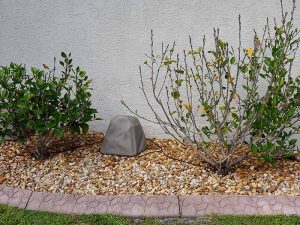 After Watering Rock
After Watering Rock
